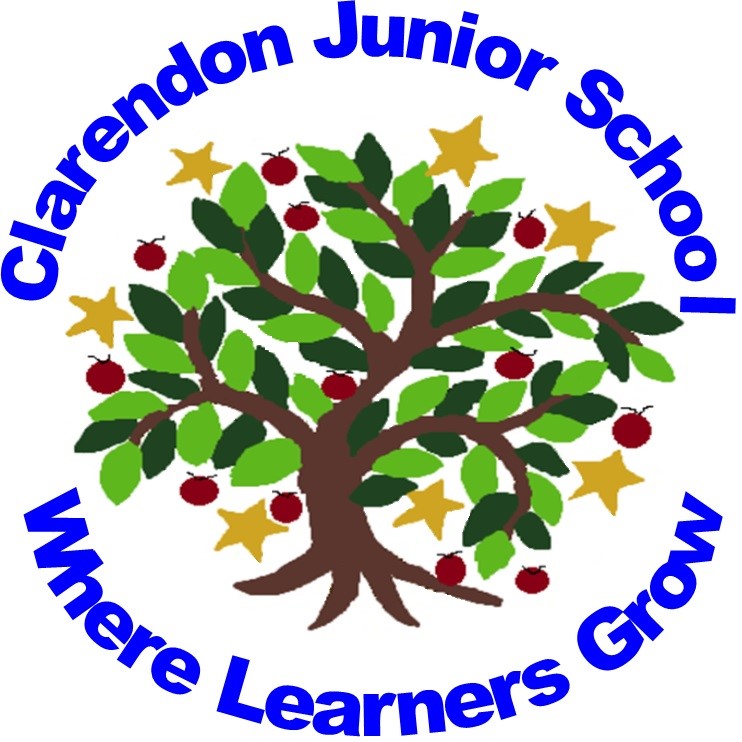Art & Design
“Art, craft and design embody some of the highest forms of human creativity. A high-quality art and design education should engage, inspire and challenge pupils, equipping them with the knowledge and skills to experiment, invent and create their own works of art, craft and design." (National Curriculum 2013).
Intent
At Clarendon Junior School, Our Art and Design curriculum offer has the intent that our children will develop a sense of creativity, self-expression, excellence and high attainment.
At Clarendon Junior School, we work towards each and every child leaving our school understanding that this subject is a source of pleasure and enjoyment for life and that everyone has a valuable contribution to it.
A strength is the display of art work created by children around the school environment; Displays of children’s latest art work can be seen in corridors around the whole school. In addition to lessons, other creative activities give a deeply rich experience of the subject; Annually, for one term, we ‘Take One Picture’ or ‘Take One Artist’, where teachers use art to inspire cross-curricular work based on a picture or artist. Parents are invited in to work in our ‘Parent Workshops’ where, together with their child, they create a piece of art which is displayed in our school hall. To further enrich experiences beyond the classroom, throughout their time with us at school, all children will be able to experience artists and sculptors visits to school.
We will deliver a curriculum that;
- Exposes all children to the arts, giving them a chance to experience, and participate in a range of creative activities and events.
- Allows our children to experiment in a ‘safe’ environment where there are no ‘right’ or ‘wrong’ results, thus, both self-expression and self-esteem may be enhanced.
- Give’s children entitlement to a wide range of experiences in the arts as part of and in addition to the curriculum.
- Give’s children the opportunity to explore, develop and communicate their personal, aesthetic response to experience.
- Develops their knowledge and skills within a wide range of arts activities.
- Introduces them to an appreciation of the arts that will last a lifetime.
- Develops their appreciation of the diverse cultural heritage within the school and local community.
- Helps them make personal interpretations of what they have experienced.
- Encourages children to express themselves creatively using a wide range of media and situations.
Implementation
The curriculum incorporates the statutory requirements of the National Curriculum 2014 and other experiences and opportunities which best meet the learning and developmental needs of the children in our school.
The teaching, learning and sequencing of the curriculum follows;
- All children follow a program of progressive skills in art and design. These take place in discrete art and design lessons and also as a means of communication in other wider curriculum subjects.
- Wherever possible, first-hand experiences and real things are used to stimulate art and design activities. Teaching is delivered in whole class groups followed by group and individual work. New techniques and skills are modelled and examples of work are shown to the children.
- In group and individual work, pupils have the opportunity to investigate, explore and develop ideas and techniques. They are also involved in evaluating their work, celebrating success and identifying areas for improvement.
- Art activities are scaffolded to ensure that all pupils can access the tasks and have an appropriate level of challenge. Pupils with particular talents are given opportunities to extend them. Opportunities for using and extending art skills are built into lessons in other subjects.
- At Clarendon Junior School we ensure that children also have access to contemporary (20th and 21st century) artists as well as more traditional ones, that are perhaps more relevant to children today.
- Cross curricular opportunities for further learning and development in the arts are built into planning of all subjects as a means of enhancing the children’s learning opportunities. These may be in the form of visiting performing arts groups, museums, galleries and other venues.
Impact
Each pupil will;
- Experience a broad, balanced arts curriculum, with an emphasis on the development of understanding and skills in art and design.
- Experience the arts through other areas of the curriculum.
- Be given a wide range of opportunities to express themselves creatively.
- Be given the opportunity to develop skills and interests in out of hours learning.
- Begin to develop awareness of the emotional impact the arts have on themselves and on an audience.
